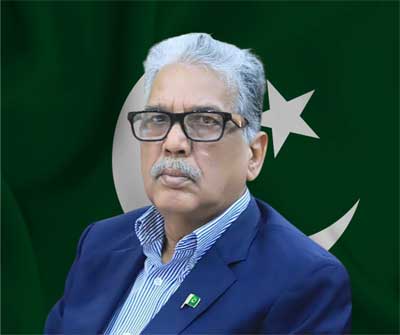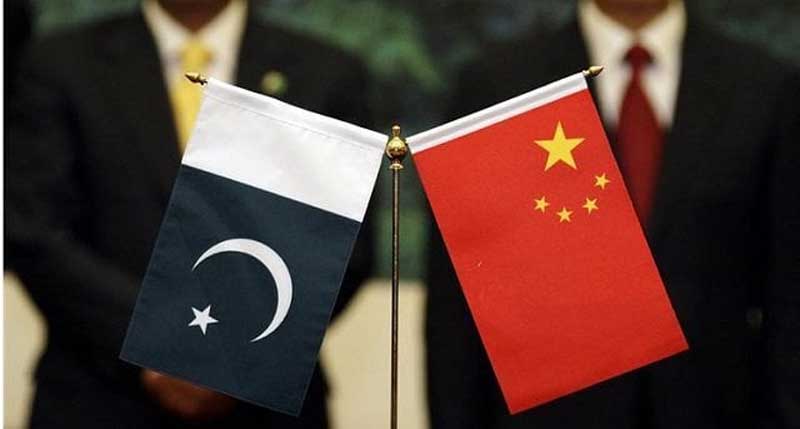

In the age of globalization, media plays a pivotal role in shaping narratives, influencing public opinion, and fostering collaboration between nations. Nowhere is this more evident than in the relationship between China and Pakistan, where strategic infrastructure projects-such as those under the China-Pakistan Economic Corridor (CPEC)-have become symbols of the deepening ties between the two countries. As these mega-projects reshape the landscape of Pakistan’s economy and infrastructure, the media has become an essential player in conveying the significance of these developments, promoting understanding, and enhancing cooperation between the two nations.
From roadways and rail networks to power plants and ports, the infrastructure projects facilitated by China State Construction Engineering Corporation (CSCEC) and other Chinese firms have transformed the physical and economic landscape of Pakistan. At the same time, the role of media in documenting, promoting, and interpreting these projects cannot be overstated. This article explores how media strengthens ties between China and Pakistan through infrastructure development and highlights the potential for further collaboration between the media sectors of both countries.
The Importance of Infrastructure in Pakistan-China Relations
China and Pakistan’s bilateral relationship, often described as “all-weather,” has a rich history of cooperation across multiple sectors, with infrastructure development emerging as a critical area in recent years. The China-Pakistan Economic Corridor, a key component of China’s Belt and Road Initiative (BRI), represents a multi-billion-dollar investment in Pakistan’s transportation, energy, and industrial infrastructure.
This strategic partnership has seen the construction of highways, railways, power plants, ports, and Special Economic Zones (SEZs). Among these transformative projects are the Lahore Orange Line Metro Train, Gwadar Port, and the Multan-Sukkur Motorway. These developments not only bolster Pakistan’s economic growth but also enhance regional connectivity, contributing to China’s vision of improving trade routes across Asia, Europe, and beyond.
While these projects have made a significant impact on Pakistan’s infrastructure, the broader public must be informed of the long-term benefits, economic opportunities, and the collaborative spirit underpinning these ventures. This is where media steps in, acting as a bridge to convey the importance of these projects to the people and fostering goodwill between China and Pakistan.
The Role of Media in Enhancing Understanding
Media has always been a powerful tool in shaping perceptions and creating narratives that help people understand complex issues, especially when it comes to infrastructure development. In the case of China-Pakistan relations, the media plays an integral role in highlighting the positive impact of CPEC and other infrastructure initiatives. By showcasing successful projects, reporting on key milestones, and providing a platform for dialogue between stakeholders, media strengthens public understanding and dispels misconceptions about these projects.
Moreover, Chinese infrastructure investments in Pakistan are often met with speculation or concerns, such as those related to debt sustainability, environmental impact, or the role of local labor. Media has the responsibility to provide balanced reporting on these issues, ensuring that accurate and unbiased information reaches the public. This transparency is essential in maintaining trust and collaboration between China and Pakistan.
Local Pakistani media outlets, such as television channels, newspapers, and online platforms, have made concerted efforts to report on CPEC and other Chinese-led infrastructure projects. Coverage has included interviews with government officials, project managers, economic experts, and workers on the ground, offering a well-rounded perspective on the significance of these developments. These reports help the general public appreciate the scale, scope, and strategic importance of such initiatives.
Simultaneously, Chinese media-both state-owned and private-has amplified Pakistan’s voice in international forums, highlighting its potential as a regional hub for economic growth through infrastructure. By regularly featuring news related to Pakistan, China’s media has contributed to a greater understanding of Pakistan’s strategic importance within the Belt and Road Initiative.
Facilitating People-to-People Connectivity
Beyond the economic benefits of infrastructure projects, media plays a crucial role in fostering people-to-people connectivity. As Chinese and Pakistani workers, engineers, and officials collaborate on large-scale construction projects, the media showcases these partnerships, emphasizing the shared goals and mutual benefits of the partnership.
One example of this media-fueled connectivity was the coverage of the Lahore Orange Line Metro Train, a project led by China’s NORINCO. Pakistani journalists and media outlets were actively engaged in documenting the progress of the project, interviewing Chinese and Pakistani engineers, and reporting on the technical expertise and technology transfer facilitated by the initiative. This coverage provided the Pakistani public with insights into the contributions of Chinese expertise while highlighting the socio-economic benefits of the project, such as improved urban mobility and job creation.
Additionally, the media has been instrumental in highlighting educational and cultural exchanges that accompany infrastructure projects. Many Chinese firms operating in Pakistan have provided scholarships for Pakistani students, offered vocational training programs, and engaged in community development initiatives. Reporting on these endeavors enhances the perception of China as not just an economic partner but also as a nation invested in Pakistan’s broader development.
Overcoming Misconceptions and Challenges
Despite the positive aspects of China-Pakistan infrastructure collaboration, there have been challenges in public perception, sometimes fueled by misinformation or miscommunication. Certain segments of the media have raised concerns regarding issues like the transparency of contracts, the impact on local businesses, and labor relations between Chinese companies and Pakistani workers.
To address these concerns, both Pakistani and Chinese media must continue to engage in fact-based reporting that accurately reflects the on-ground realities. By providing detailed reports, data-driven analysis, and expert opinions, the media can ensure that misconceptions are cleared and that a constructive dialogue about the benefits and challenges of Chinese investment in Pakistan continues.
Further collaboration between Chinese and Pakistani media houses, through joint reporting, exchange programs, and cooperative content creation, could also help overcome some of these challenges. Joint initiatives would allow for more balanced coverage, presenting both nations’ perspectives and fostering greater understanding among the people of both countries.
Media as a Catalyst for Future Collaboration
The relationship between China and Pakistan is not confined to infrastructure projects alone. Media plays a vital role in covering other dimensions of this relationship, such as defense cooperation, educational exchanges, and cultural ties. Through sustained reporting on these areas, media can further deepen the bond between the two nations.
Looking ahead, there is immense potential for further collaboration between Chinese and Pakistani media outlets. This could include co-producing documentaries on infrastructure projects, developing dedicated media platforms that focus on CPEC-related developments, and hosting media forums where journalists from both countries can share their experiences and insights.
As media continues to evolve with digital advancements, both China and Pakistan can explore new ways to leverage platforms like social media, online news portals, and mobile applications to disseminate information on their growing partnership. Engaging the youth in both countries through digital channels would help cultivate the next generation of leaders and stakeholders invested in strengthening China-Pakistan ties.
As China and Pakistan deepen their collaboration through infrastructure development, media will play an increasingly critical role in shaping the narrative of this partnership. By providing accurate, balanced, and insightful coverage of projects like those under CPEC, media strengthens public understanding, dispels misconceptions, and promotes transparency.
Media’s role in fostering connectivity, both at the governmental and people-to-people levels, cannot be overstated. Whether through documenting the technical marvels of projects like the Lahore Orange Line Metro Train or providing a platform for dialogue on socio-economic development, media serves as a crucial link in enhancing China-Pakistan relations. By continuing to collaborate and exchange ideas, the media sectors of both countries can ensure that the narrative surrounding infrastructure development is one of mutual benefit, shared progress, and lasting friendship.




